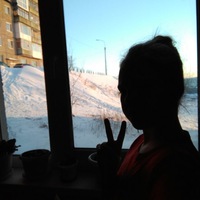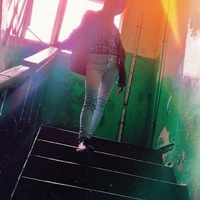
Толкование слов из рассказа Льва Толстого "Кавказский Пленник" Слова: Ногаец, Сокля, Бешмет,
Черкеска, "Айда",Войлок, Галунчиком обашит голун, Мулла, Буза, Софьянные башмачки,Чалма, Урус, Джигит, Мечеть, Шептала, Мекка, Хаджи и Алла5 класс 0
0
 0
0
Ответы на вопрос
 Внимание! Ответы на вопросы дают живые люди. Они могут содержать ошибочную информацию, заблуждения, а также ответы могут быть сгенерированы нейросетями. Будьте внимательны. Если вы уверены, что ответ неверный, нажмите кнопку "Пожаловаться" под ответом.
Внимание! Ответы на вопросы дают живые люди. Они могут содержать ошибочную информацию, заблуждения, а также ответы могут быть сгенерированы нейросетями. Будьте внимательны. Если вы уверены, что ответ неверный, нажмите кнопку "Пожаловаться" под ответом.

 0
0
 0
0

Чалма-головной убор
Урус-русский в кавказских и тюркских. языках
Мечеть-место,где молятся мусульмане
Мекка-священный город мусульман.
 0
0
 0
0

Interpretation of Words from Leo Tolstoy's "The Caucasian Prisoner"
In Leo Tolstoy's "The Caucasian Prisoner," there are several words that may require interpretation. Here is a breakdown of the meanings of these words:
1. Nogayets (Ногаец): This term refers to a member of the Nogai people, who are a Turkic ethnic group primarily living in the North Caucasus region of Russia. They have a rich cultural heritage and are known for their horsemanship and warrior traditions.
2. Soklya (Сокля): This word is a term used to describe a type of traditional footwear worn by the Nogai people. It is a soft leather boot that is typically worn with traditional Nogai clothing.
3. Beshmet (Бешмет): The beshmet is a traditional garment worn by various ethnic groups in the Caucasus region, including the Nogai people. It is a long, loose-fitting coat made of sheepskin or wool, often decorated with intricate embroidery.
4. Cherkesska (Черкеска): The Cherkesska is a traditional Circassian coat worn by both men and women in the Caucasus region. It is typically made of wool and features a distinctive cut and design.
5. "Aida" (Айда): "Aida" is an exclamation used to encourage or rally people. It is often used in traditional Caucasian dances and songs to prompt participants to join in or to express enthusiasm.
6. Voilok (Войлок): Voilok refers to felt, a textile material made by compressing and matting fibers together. Felt is commonly used in the Caucasus region for various purposes, including clothing, rugs, and tents.
7. Galunchikom obashit golun (Галунчиком обащить голун): This phrase is not commonly used and does not have a clear meaning. It appears to be a combination of words that may be specific to the story or have a regional dialectic significance.
8. Mulla (Мулла): Mulla is an Arabic term used to refer to a Muslim religious leader or scholar. In the context of the story, it likely refers to a local religious figure.
9. Buza (Буза): Buza is a traditional Caucasian beverage made from fermented grains, such as millet or corn. It is often consumed during festive occasions or social gatherings.
10. Sofyanne bashmachki (Софьянные башмачки): Sofyanne bashmachki refers to a type of traditional Caucasian footwear, similar to slippers or soft shoes. They are typically made of leather and are worn indoors or for more casual occasions.
11. Chalma (Чалма): Chalma is a term used to describe a traditional Caucasian headdress or turban. It is typically made of a long piece of fabric that is wrapped around the head.
12. Urus (Урус): Urus is a term used to describe a wild ox or bison. In the context of the story, it may refer to a specific animal or have symbolic significance.
13. Dzhigit (Джигит): Dzhigit is a term used to describe a skilled horseman or warrior in the Caucasus region. It is often associated with bravery, agility, and equestrian skills.
14. Mechet (Мечеть): Mechet is the Russian word for a mosque, which is a place of worship for Muslims.
15. Sheptala (Шептала): Sheptala is a verb form derived from the word "sheptat," which means to whisper or speak softly. In the context of the story, it likely refers to someone whispering or speaking in a hushed tone.
16. Mekka (Мекка): Mekka is the Russian spelling of Mecca, which is the holiest city in Islam. It is the birthplace of the Prophet Muhammad and the site of the Kaaba, the most sacred shrine in Islam.
17. Khaji (Хаджи): Khaji is an honorific title used to address someone who has completed the Hajj pilgrimage to Mecca. It is a sign of respect and recognition of their religious devotion.
18. Alla (Алла): Alla is a variant of the name Allah, which is the Arabic word for God in Islam.
Please note that the interpretation of these words is based on their general meanings and may vary depending on the specific context of the story.
 0
0
 0
0
Топ вопросов за вчера в категории Литература
Последние заданные вопросы в категории Литература
-
Математика
-
Литература
-
Алгебра
-
Русский язык
-
Геометрия
-
Английский язык
-
Химия
-
Физика
-
Биология
-
Другие предметы
-
История
-
Обществознание
-
Окружающий мир
-
География
-
Українська мова
-
Информатика
-
Українська література
-
Қазақ тiлi
-
Экономика
-
Музыка
-
Право
-
Беларуская мова
-
Французский язык
-
Немецкий язык
-
МХК
-
ОБЖ
-
Психология
-
Физкультура и спорт
-
Астрономия
-
Кыргыз тили
-
Оʻzbek tili




















